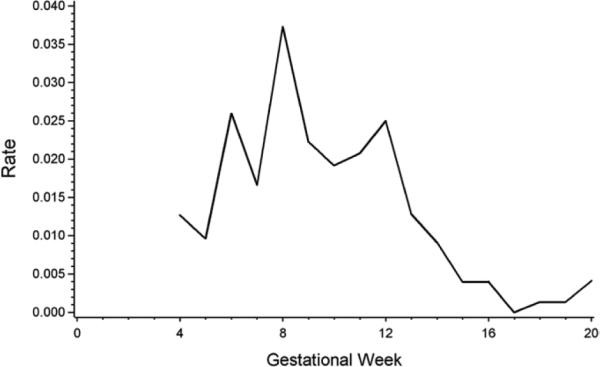Introduction
For pregnant individuals, especially those in professions like flight attendants, concerns about the safety of air travel during pregnancy, particularly in the first trimester, are common. One frequently asked question is: Can flying in the first trimester cause a miscarriage? This article delves into this important health concern, drawing upon scientific research to explore the potential risks associated with flying during early pregnancy and miscarriage. We will examine factors such as cosmic radiation exposure and circadian rhythm disruption, relevant to flight attendants and air travelers alike, to provide a comprehensive understanding of this issue.
Understanding the Concerns: Cosmic Radiation and Circadian Disruption
The occupation of flight attendants presents unique workplace exposures, notably cosmic ionizing radiation and circadian rhythm disruption. Cosmic radiation, originating from galactic sources and solar events, intensifies at aircraft altitudes. This radiation includes known carcinogens and poses a potential reproductive hazard. Furthermore, frequent flying across time zones and irregular work schedules disrupt the body’s natural circadian rhythm, which can influence reproductive hormones. These factors have led to concerns about adverse pregnancy outcomes in flight attendants, including miscarriage.
Research Investigating Miscarriage Risks in Flight Attendants
A significant study was conducted to evaluate miscarriage risk among flight attendants and to assess the potential impact of cosmic radiation, circadian disruption, and other occupational factors. This study compared flight attendants to teachers, a group with minimal occupational air travel and fewer reproductive hazards.
Study Methodology: Assessing Exposures and Outcomes
The research involved interviewing flight attendants from three major US airlines and teachers from the same cities. Participants provided detailed pregnancy histories and information on lifestyle, medical background, and occupational factors. Crucially, the study utilized company flight records of over 2 million individual flights to accurately assess cosmic radiation and circadian disruption exposures for flight attendants.
Cosmic radiation dose was estimated for each flight segment using the Federal Aviation Administration’s CARI6P program. Solar particle event doses, not calculated by CARI6P, were estimated using data from NASA’s Nowcast of Atmospheric Ionizing Radiation for Aviation Safety model. Circadian disruption was measured using two metrics: cumulative time zones crossed and Standard Sleep Interval travel (hours flown during 10 pm to 8 am at the flight attendant’s domicile).
Miscarriage was defined as self-reported involuntary termination of a recognized pregnancy through the 20th gestational week, with early miscarriage occurring at or before 13 weeks. Statistical models were used to compare miscarriage rates between flight attendants and teachers, and to analyze the association between occupational exposures and miscarriage risk within the flight attendant group.
Key Findings: Occupational Exposures and Miscarriage Risk
The study’s findings revealed several important associations:
- Cosmic Radiation: The research suggested a potential link between cosmic radiation exposure of 0.1 mGy or more and an increased risk of miscarriage during gestational weeks 9–13. While the confidence interval approached statistical significance, it indicated a possible elevated risk.
- Circadian Disruption: A notable finding was the increased risk of first-trimester miscarriage associated with 15 hours or more of flying during home-base sleep hours. This highlights the impact of circadian disruption on pregnancy outcomes.
- Physical Job Demands: High physical job demands were also identified as a significant risk factor for miscarriage.
Interestingly, when comparing flight attendants to teachers directly, the study did not find an overall increased risk of miscarriage among flight attendants. However, within the flight attendant group, specific occupational exposures did show associations with miscarriage.
Analyzing Exposure Levels and Potential Risks
The study provided detailed exposure estimates for a hypothetical pregnant flight attendant with median first-trimester exposures. This individual flew 130 hours in 53 flight segments, crossed 34 time zones, and spent 15 hours flying during typical sleep hours, incurring a cosmic radiation absorbed dose of 0.13 mGy. While this radiation dose is relatively low, it is still higher than background radiation levels experienced by non-flying individuals.
 FIGURE
FIGURE
Comparison to Other Radiation Exposure Scenarios
While the study’s findings suggest a potential association at relatively low levels of cosmic radiation, it’s important to contextualize these exposures. Recommendations from the International Commission on Radiological Protection set dose limits for radiation workers significantly higher than the exposures experienced by most flight attendants. However, it’s also noted that even low levels of x-ray exposure have been linked to miscarriage in other occupational groups, such as nurses and veterinarians.
The Role of Circadian Disruption in Miscarriage
The study’s identification of Standard Sleep Interval travel as a risk factor underscores the importance of circadian rhythm in pregnancy health. Disruptions to the circadian system, caused by night work and time zone changes, can impact hormonal regulation and potentially increase miscarriage risk. This finding aligns with research linking night shift work to adverse reproductive outcomes.
Considering Physical Job Demands
The association between high physical job demands and miscarriage highlights the physically demanding nature of flight attendant work. Tasks involving prolonged standing, walking, bending, lifting, and pushing/pulling can contribute to miscarriage risk, particularly when combined with other occupational stressors.
Implications and Recommendations
This research provides valuable insights into the occupational hazards faced by flight attendants and their potential impact on pregnancy. While the study did not find a higher overall miscarriage rate for flight attendants compared to teachers, it did reveal associations between specific occupational exposures and miscarriage risk within the flight attendant group.
The findings suggest that:
- Cosmic radiation exposure may pose a risk, particularly during specific gestational windows, although further research is needed to confirm this association definitively.
- Circadian disruption, especially working during sleep hours, is a significant factor associated with increased miscarriage risk.
- Physical job demands contribute to the overall risk of miscarriage.
For pregnant flight attendants, these findings emphasize the importance of:
- Informed Decision-Making: Understanding the potential risks associated with flying, especially during the first trimester, allows for informed decisions about work schedules and pregnancy management.
- Managing Workload: Minimizing exposure to high physical job demands and circadian disruption through workload adjustments and scheduling considerations may be beneficial.
- Further Research: Continued research is crucial to further clarify the risks of cosmic radiation and circadian disruption and to develop specific guidelines for pregnant flight attendants and air travelers.
Conclusion: Navigating Pregnancy and Air Travel
The question “can flying in the first trimester cause miscarriage?” is complex and nuanced. While this study suggests that typical levels of air travel may not significantly increase miscarriage risk compared to non-flying professions, it does highlight potential risks associated with specific occupational exposures experienced by flight attendants. Cosmic radiation, circadian disruption, and physical job demands are factors that warrant consideration for pregnant individuals who fly, especially those in flight-related occupations. Further research and informed decision-making are essential to ensure the health and safety of pregnant individuals in the aviation industry and those who travel by air during pregnancy.
